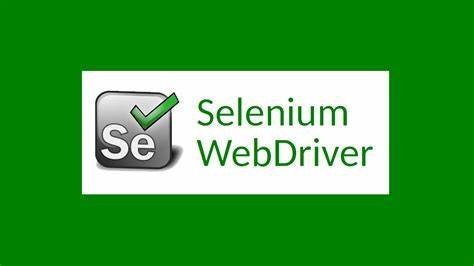Selenium WebDriver
Course Overview
Selenium WebDriver is an open source tool used for automating web browser interactions. It allows you to write test scripts that can control a browser, simulate user actions, and verify the behavior of web applications. Selenium WebDriver is a powerful tool for web application testing and automation.
Prerequisites: Students should have at least a high school diploma or GED.
2 months (95 hours) of a long professional course.
Course Curriculum
What is Software Testing? Types of Testing, Quality and Demonstration
Test scenarios, Test Cases, Test Data preparation Technique, Defect life cycle—practical demonstration on sample applications. Plus, there is an assignment for the participants to do the same.
Requirement Traceability Matrix (RTM), Reviews, Weekly Reports and its importance.
Software Testing Live Cycle (STLC), Different Models that are Practiced, and Pros and Cons
Challenges in Software Testing, Testing Principles, and Qualities of a Tester: To get ready to answer Real-Time real time interview questions
History of Java, Basic Java Syntax & keywords
Data Types (Boolean, char, byte, int, short, long, float and double) and its storage capacity
Different types of loops: for, while, and do-while loops with conditions and examples
Object Oriented Programming Concepts (OOPs): Classes & Objects, Encapsulation, Inheritance, Polymorphism, Abstraction, Interfaces and Hands-on demonstration
- Use of variables in programming
- Arithmetic operators in Java
- Relational operators in Java
- Input and Output functions
- Writing Java Program
Conditional statements
- if-eif-else condition
- for loop, while loop, Do Loop
- Switch Statements
- break, continue and for-else
Exception handling
try-catch, finally, throw, throws, different types of exceptions
- Array, HashMap Exceptions, etc.
Exercises/Assignments
Different components in Selenium and evolution: IDE, RC, WebDriver, GRID and its advantages
Selenium IDE: For Record and Playback & its limitations
WebDriver Introduction and setup: Download and configuration in Eclipse editor
Identifying and inspecting different web elements and objects (text boxes, buttons, links, checkboxes, radio buttons, windows, frames, tables, alerts, etc.) using various locators supported
Locators: id, name, xpath, CSS Selectors, class, link text, partial link text, and tag name
Validations: Use conditional statements and check if the condition is satisfied or not
Synchronization concepts: implicit, Explicit and conditional waits and its significance
Maven Project Creation: Advantages of Maven project over normal Java project
Properties files: To store values using Key-value pair
Performing operations on various elements with in-built methods
Keyboard and mouse events: keys up/down, drag & drop, actions class, etc.
Page Object Model implementation (POM): Advantages over normal automation Scripts
- Page Factory Implementation
Different TestNG Annotations: BeforeSuite, BeforeTest, BeforeClass, BeforeMethod, TestCase, AfterMethod, AfterClass, AfterTest
Assertions: As part of verification point, various in-built methods are used to compare actual vs. expected result
Reading and writing data from excel sheet: How to iterate through different records in an excel sheet using dependency jars such as Apachi
TestNG Reports: For better test results and analysis
Introduction and Significance of BDD Cucumber:
- Why industry prefer this over normal automation technique. Required dependency files and configuration/setup required
Feature file, Scenario, Scenario Outline, Background, Gata Generator, Key Table, Step definition file and Runner file with pre-conditions—to perform and run
Introduction of Jenkins
Jenkins Configuration and setup
Jenkins Integration with Maven project: How to run scripts from Maven project and integrate using Jenkins CI/CD tool, which helps to run out of the editor.
Demonstration: 10 Hours
Lab Work: 22 Hour
Total Hours: 32 hours of hands-on practice sessions and real-time project-based lab work.
The module “Automation Testing Bootcamp” is a pivotal part of the course “Testing Automation with Java and Selenium.” This module aims to provide students with a comprehensive understanding of automation testing principles and practices. Students will delve into various automation testing frameworks, including Java and Selenium, and gain hands-on experience in building automation test scripts.
The module “Comprehensive Interview Training” is a valuable component of the course. In this module, students will receive specialized training to enhance their interview skills and readiness for job. The instructor will conduct an interview session at the conclusion of the program, based on the knowledge and skills acquired throughout the four-month course. Students will have the opportunity to demonstrate their understanding.
The interview session will help students refine their communication skills, showcase their technical proficiency, and gain valuable feedback to further enhance their interviewing capabilities. By participating in this module, students will be better prepared to excel in interviews and increase their chances of securing rewarding positions in the testing automation industry.
In this session, Course Completion certificate will be provided to the students who has successfully completed the course.

About This Course:
- Instructor Lead Online Training
- Certificate of Completion
- Resume Preparation
- Interview Preparation
- Mock Interview
- Client Interview
- Project Support






